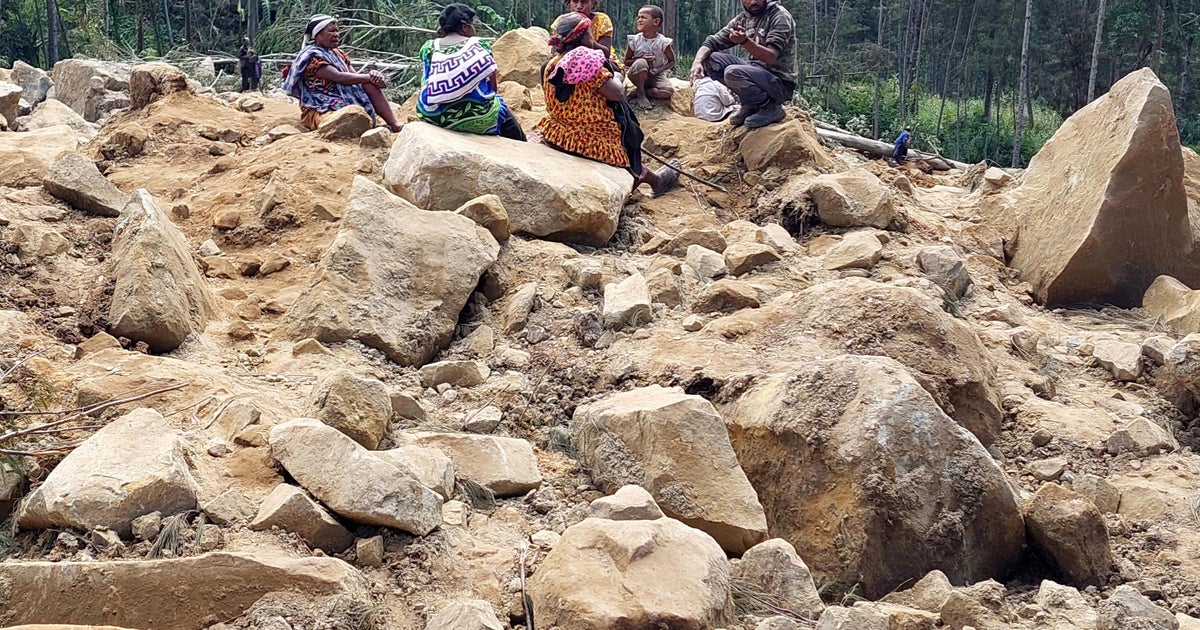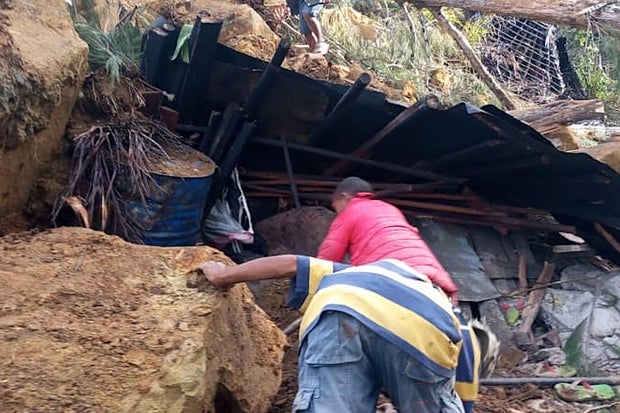Melbourne, Australia — The Papua New Guinea government said a landslide Friday buried more than 2,000 people alive. It formally asked for international help.
The government figure is around three times more than a United Nations’ estimate of 670.
The remains of only six people had been recovered so far.
STR / AFP via Getty Images
In a letter to the U.N. resident coordinator dated Sunday and seen by numerous news agencies, the acting director of the South Pacific island nation’s National Disaster Center said the landslide “buried more than 2000 people alive” and caused “major destruction.”
The landslide caused “major destruction to buildings, food gardens and caused major impact on the economic lifeline of the country,” the letter said, according to Agence France-Presse.
The letter also said the main highway to the Porgera Gold Mine was “completely blocked.”
Estimates of the casualties have varied widely since the disaster occurred, and it wasn’t immediately clear how officials arrived at the new number of people affected.
Australia was preparing Monday to send aircraft and other equipment to help at the landslide site as overnight rains in the nation’s mountainous interior raised fears that the tons of rubble that buried villagers could become dangerously unstable.
Australian Defense Minister Richard Marles said his officials have been talking with their Papua New Guinea counterparts since Friday, when a mountainside collapsed on Yambali village in Enga province.
“The exact nature of the support that we do provide will play out over the coming days,” Marles told the Australian Broadcasting Corp.
“We’ve obviously (have) airlift capacity to get people there. There may be other equipment that we can bring to bear in terms of the search and rescue (and other matters) … that we are talking through with PNG right now,” Marles added.
Papua New Guinea is Australia’s nearest neighbor and the countries are developing closer defense ties as part of an Australian effort to counter China’s growing influence in the region. Australia is also the most generous provider of foreign aid to its former colony, which became independent in 1975.
Heavy rain fell for two hours overnight in the provincial capital of Wabag, 35 miles from the devastated village. A weather report wasn’t immediately available from Yambali, where communications are limited.
But emergency responders were concerned about the impact of rain on the already unstable mass of debris lying 20 to 26 feet deep over an area the size of three-to-four football fields.
An excavator donated by a local builder Sunday became the first piece of heavy earth-moving machinery brought in to help villagers who’ve been digging with shovels and farming tools to find bodies. Working around the still-shifting debris is treacherous.
STR / AFP via Getty Images
STR / AFP via Getty Images
Serhan Aktoprak, the chief of the U.N International Organization for Migration’s mission in Papua New Guinea, said water was seeping between the debris and the earth below, increasing the risk of a further landslide.
He said he didn’t expect to learn the weather conditions at Yambali until Monday afternoon.
“What really worries me personally very much is the weather, weather, weather,” Aktoprak said. “Because the land is still sliding. Rocks are falling,” he said.
Papua New Guinea’s defense minister, Billy Joseph, and the government’s National Disaster Center director, Laso Mana, flew on Sunday in an Australian military helicopter from the capital of Port Moresby to Yambali, 370 miles to the northwest, to gain a firsthand perspective of what’s needed.
Mana’s office posted a photo of him at Yambali handing a local official a check for 500,000 kina ($130,000) to buy emergency supplies for the 4,000 displaced survivors.
Earth-moving equipment used by Papua New Guinea’s military was being transported to the disaster scene 250 miles from the east coast city of Lae.
Traumatized villagers are divided over whether heavy machinery should be allowed to dig up and potentially further damage the bodies of their buried relatives, officials said.




